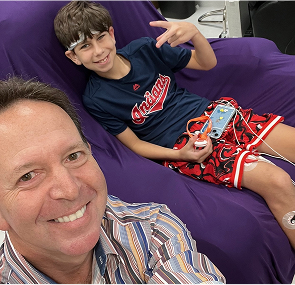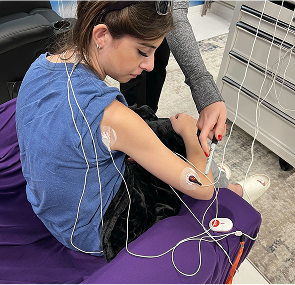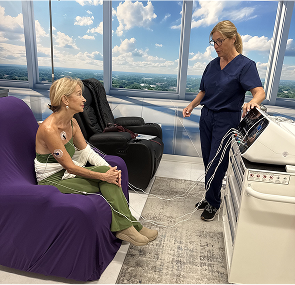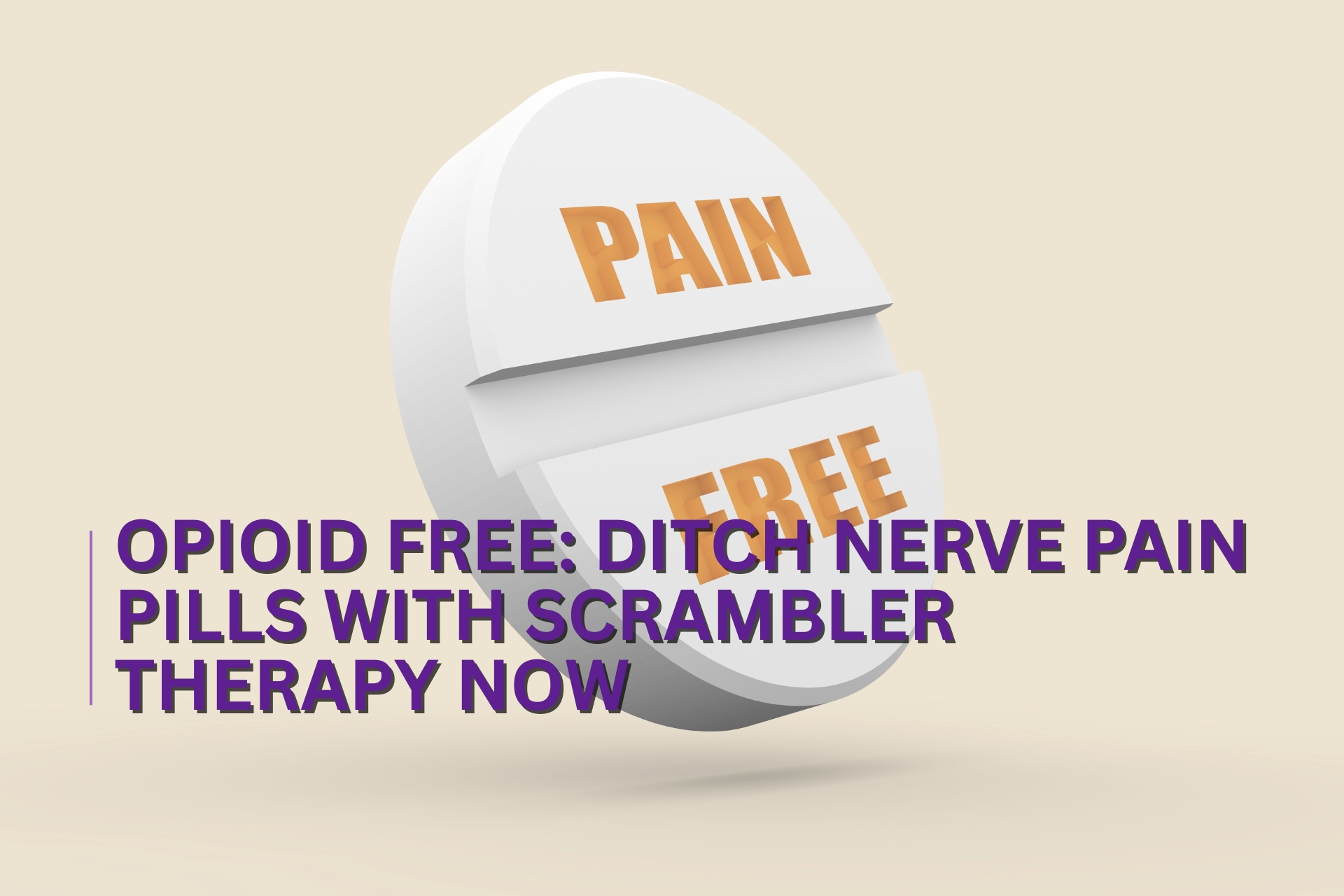Studies Showing Scrambler Therapy’s Effectiveness in Chemotherapy Induced Peripheral Neuropathy
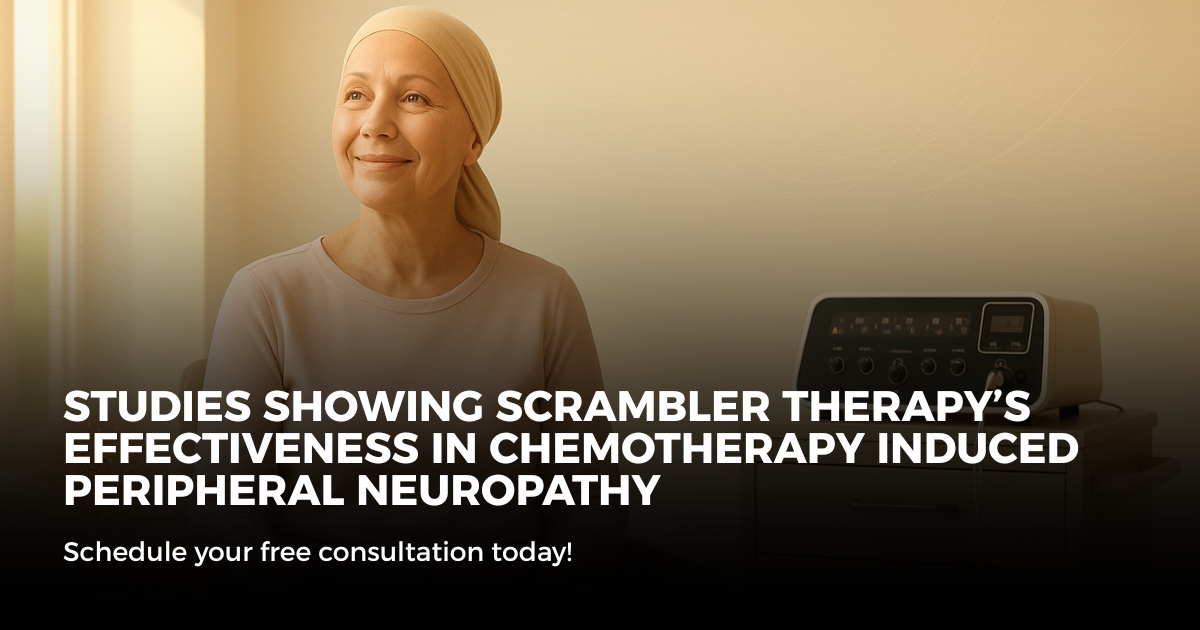
CIPN is nerve damage caused by chemotherapy. It commonly affects sensory nerves and leads to symptoms like tingling, burning, numbness, and shooting pain—typically in the hands and feet. These symptoms reflect axonal damage and are a direct consequence of neurotoxic cancer treatments.
Key Characteristics of CIPN:
- Symptoms: Burning, tingling, numbness, and sharp pain
- Cause: Neurotoxic effects from drugs like platinum-based agents (e.g. cisplatin), taxanes (e.g. paclitaxel), and vinca alkaloids
- Onset: May occur during or after chemotherapy
- Impact: Can persist for months or years, affecting quality of life and treatment continuation
Peripheral neuropathy from chemo disrupts daily functions like walking, sleeping, and even holding objects. The damage primarily targets sensory neurons in the dorsal root ganglia, leading to persistent cancer-induced nerve pain.
Next, we’ll explore the biological mechanisms behind CIPN.
How Chemotherapy Causes Peripheral Neuropathy
Chemotherapy-induced peripheral neuropathy develops when anticancer agents damage peripheral nerves through multiple pathophysiological mechanisms.
Mechanisms of CIPN:
Key Pathways Affected:
- Nociceptive pathways become hypersensitive
- Ion channels are disrupted, causing nerve hyperexcitability
- Mitochondrial dysfunction leads to poor energy production in nerves
- Chronic inflammation sustains nerve injury and sensitization
Chemo-induced nerve injury affects both the structure and function of neurons, resulting in long-term neuropathic pain and nerve inflammation. This complexity makes CIPN difficult to treat with conventional pharmacotherapy.
Let’s now look at how Scrambler Therapy offers a non-drug alternative.
Overview of Scrambler Therapy for Neuropathic Pain
Scrambler Therapy is a non-invasive neurostimulation technique approved by the FDA for the treatment of chronic neuropathic pain, including CIPN.
What Is Scrambler Therapy?
- Developed by Prof. Giuseppe Marineo in Italy
- Uses a device called the Calmare®
- Delivers electrocutaneous signals via surface electrodes
- Designed to retrain nerve communication by replacing pain signals with synthetic “non-pain” messages
How It Works:
- Electrodes are placed around the pain site.
- Transcutaneous electrical modulation is applied.
- Bioelectric feedback interrupts pain signaling.
- Nerve retraining occurs by targeting afferent nerve fibers.
Scrambler Therapy overview research has shown it to be an effective alternative CIPN treatment, with minimal side effects and non-drug pain relief benefits.
Now we’ll examine the clinical studies supporting its effectiveness in CIPN.
Research-Backed Effectiveness of Scrambler Therapy in CIPN
Multiple randomized controlled trials (RCTs) and observational studies validate the clinical impact of Scrambler Therapy in treating chemotherapy-induced peripheral neuropathy.
Notable Clinical Trials:
Common Findings:
- VAS pain scores dropped significantly within 5–10 sessions
- Patients reported improved mobility and daily activity return
- Positive outcomes maintained over longitudinal follow-ups
Scrambler Therapy CIPN studies repeatedly show clinically meaningful reductions in neuropathic pain, even when other treatments have failed.
Let’s compare Scrambler Therapy with other commonly used therapies.
Comparative Effectiveness vs Other CIPN Treatments
Scrambler Therapy outperforms several traditional treatments for cancer-induced nerve pain, both in efficacy and tolerability.
Comparison Table:
Duloxetine vs Scrambler Therapy: Scrambler offers faster pain reduction with fewer adverse effects.
Acupuncture for nerve pain shows some promise but lacks strong evidence in CIPN-specific trials.
We’ll now explore how Scrambler Therapy actually reprograms pain signaling.
Mechanism of Action Behind Scrambler Therapy in CIPN
Scrambler Therapy works through neuromodulation, where artificial non-pain signals are sent via afferent nerves to remap the brain’s pain memory.
Key Mechanisms:
- Replaces pain messages with synthetic, non-pain input
- Interrupts nociceptive modulation at the spinal cord level
- Stimulates CNS plasticity to recondition the brain’s pain interpretation
- Triggers descending inhibition, reducing pain perception
This pain transmission block leads to central nervous system (CNS) reprogramming, where the brain “forgets” chronic pain patterns. This somatosensory reconditioning is especially beneficial for long-standing CIPN cases.
Who benefits most? Let’s look at patient profiles.
Who is an Ideal Candidate for Scrambler Therapy for CIPN?
Not all CIPN patients respond equally. Ideal candidates show specific characteristics.
Eligibility Criteria:
- Refractory CIPN pain not responding to medication
- History of taxane or platinum-based chemotherapy
- Moderate to severe pain severity scale rating
- Stable comorbidities and no contraindications to electrotherapy
- Oncologist or palliative care referral recommended
Scrambler Therapy CIPN patients often have exhausted other options. A risk-benefit analysis by the treating physician is essential before initiating therapy.
Now let’s break down the typical therapy protocol.
Scrambler Therapy Protocol for Chemotherapy-Induced Peripheral Neuropathy
The therapy follows a structured regimen aimed at progressive pain reduction and nerve reprogramming.
Protocol Details:
- Session Duration: 30–45 minutes
- Frequency: Daily sessions, 5 days per week
- Typical Course: 10–12 sessions
- Electrode Placement: Surrounds the pain region, not directly over it
- Stimulation Intensity: Adjusted to just below pain threshold
Progress is tracked using VAS scores, pain tracking diaries, and session feedback. Dose titration ensures personalized stimulation levels.
Let’s review real patient experiences.
Patient Case Studies and Testimonials on CIPN and Scrambler Therapy
Real-world evidence shows Scrambler Therapy success stories across diverse patient profiles.
Case Example 1 – “John,” Male, 62, Colon Cancer:
- Chemo Used: Oxaliplatin
- Pain Duration: 14 months
- Sessions: 10
- Result: 70% pain reduction, resumed walking unaided
- Follow-Up: No recurrence at 6 months
Case Example 2 – “Maria,” Female, 55, Breast Cancer:
- Chemo Used: Paclitaxel
- Symptom: Burning feet, sleep disruption
- Result: Returned to full-time work after therapy
Quality of life scores improved, and functional recovery allowed patients to reduce or stop medications. These outcomes reinforce patient-reported outcomes in clinical trials.
Let’s now consider safety.
Risks, Side Effects, and Safety Profile of Scrambler Therapy
Scrambler Therapy has an excellent safety profile with minimal adverse events.
Known Side Effects:
- Mild skin irritation under electrodes
- Occasional contact allergy or redness
- Rare hypersensitivity to electrode gel
There’s no risk of nerve overstimulation, as the signals mimic normal sensory inputs. Precaution protocols include avoiding use in patients with implanted electrical devices (e.g., pacemakers).
Most patients tolerate the therapy well and complete full protocols.
Let’s discuss cost and accessibility.
Insurance Coverage and Accessibility for CIPN Patients
Scrambler Therapy is reimbursable under certain CPT codes depending on insurer and location.
Key Considerations:
- CPT Code: 0278T (unlisted neurostimulator procedure)
- Medicare Coverage: Varies by region and physician documentation
- Private Insurance: Often requires prior authorization
- Scrambler Clinics: Found in major cancer centers and pain management networks
- Cost: $250–$500 per session out-of-pocket without coverage
Patients are advised to contact in-network providers and verify insurance approval for affordable care.
To wrap up, we’ll answer common questions.
Frequently Asked Questions (FAQs) About Chemotherapy-Induced Peripheral Neuropathy and Scrambler Therapy
Is Scrambler Therapy effective for all types of chemotherapy-induced neuropathy?
Yes, especially for neuropathy from taxanes, platinum-based drugs, and vinca alkaloids.
How long do the effects of Scrambler Therapy last in CIPN patients?
Relief typically lasts 3 to 12 months, with some reporting long-term remission.
Can Scrambler Therapy completely cure CIPN?
No, but it can significantly reduce pain and improve function, even in chronic cases.
Are there any patients who should not use Scrambler Therapy?
Yes. Those with implanted electrical devices (e.g. pacemakers) or severe skin conditions at the treatment site.
How does Scrambler Therapy compare with medications like duloxetine for nerve pain?
Scrambler shows faster onset, fewer side effects, and better adherence compared to duloxetine, especially for refractory CIPN.
Experiencing Chronic Pain in South Florida?
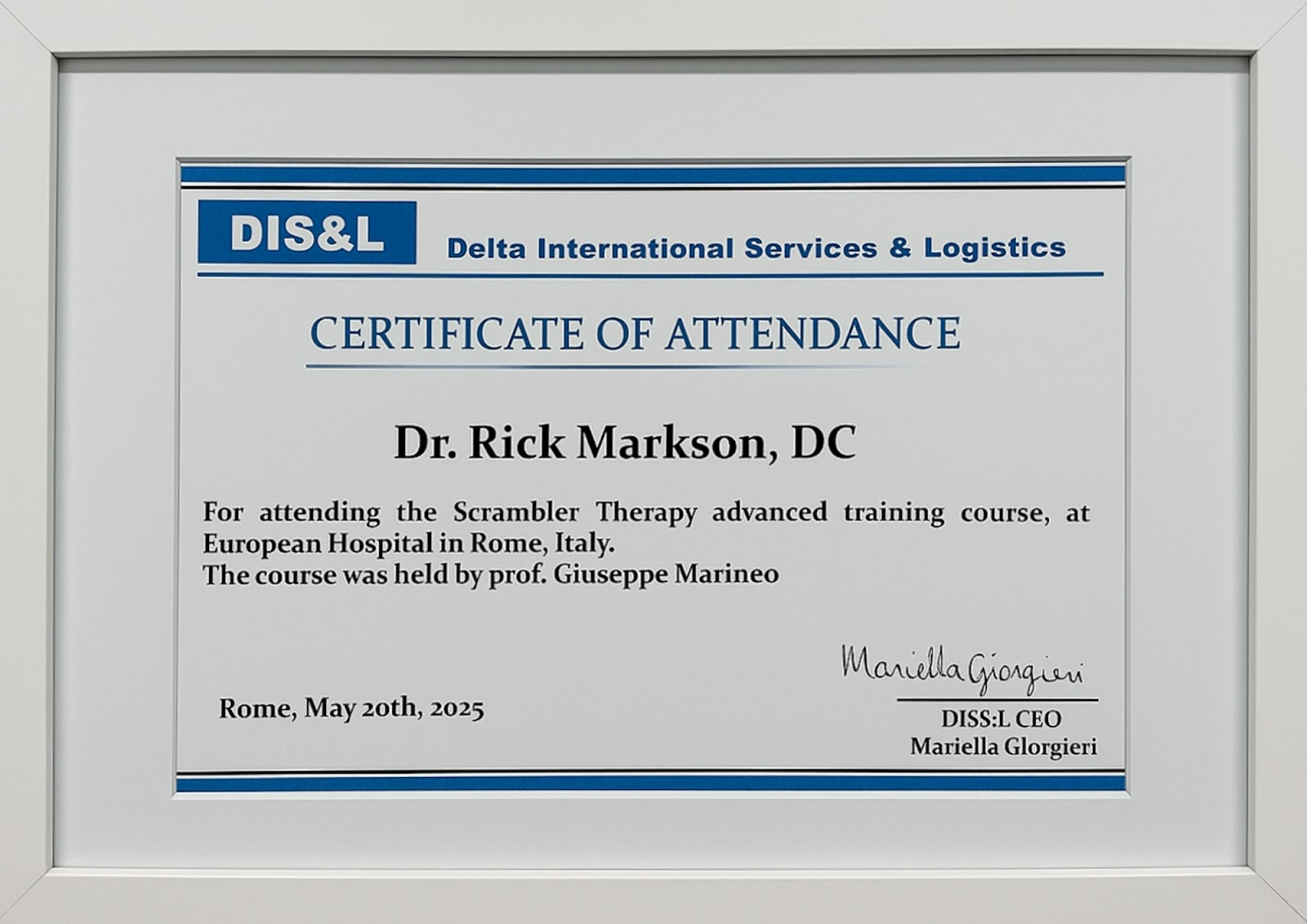
Discover South Florida Scrambler Therapy is one of the nation’s leading clinics for noninvasive chronic pain relief, offering FDA-cleared Scrambler Therapy® for adults and children. Co-founded by Dr. Rick Markson, one of the few practitioners worldwide to receive advanced certification directly from the therapy’s inventor in Rome, our clinic delivers globally recognized expertise with compassionate, personalized care. If you or a loved one is living with treatment-resistant nerve pain, we invite you to schedule a consultation and explore a life beyond pain.
Recommended Reads:
📘 What is scrambler therapy?
📘 What to Expect During a Scrambler Session
📘 CRPS Pain Relief Without Drugs—Real Patient Stories
📘 Conditions that scrambler therapy can treat
Take the Next Step: Free Consultation at South Florida Scrambler
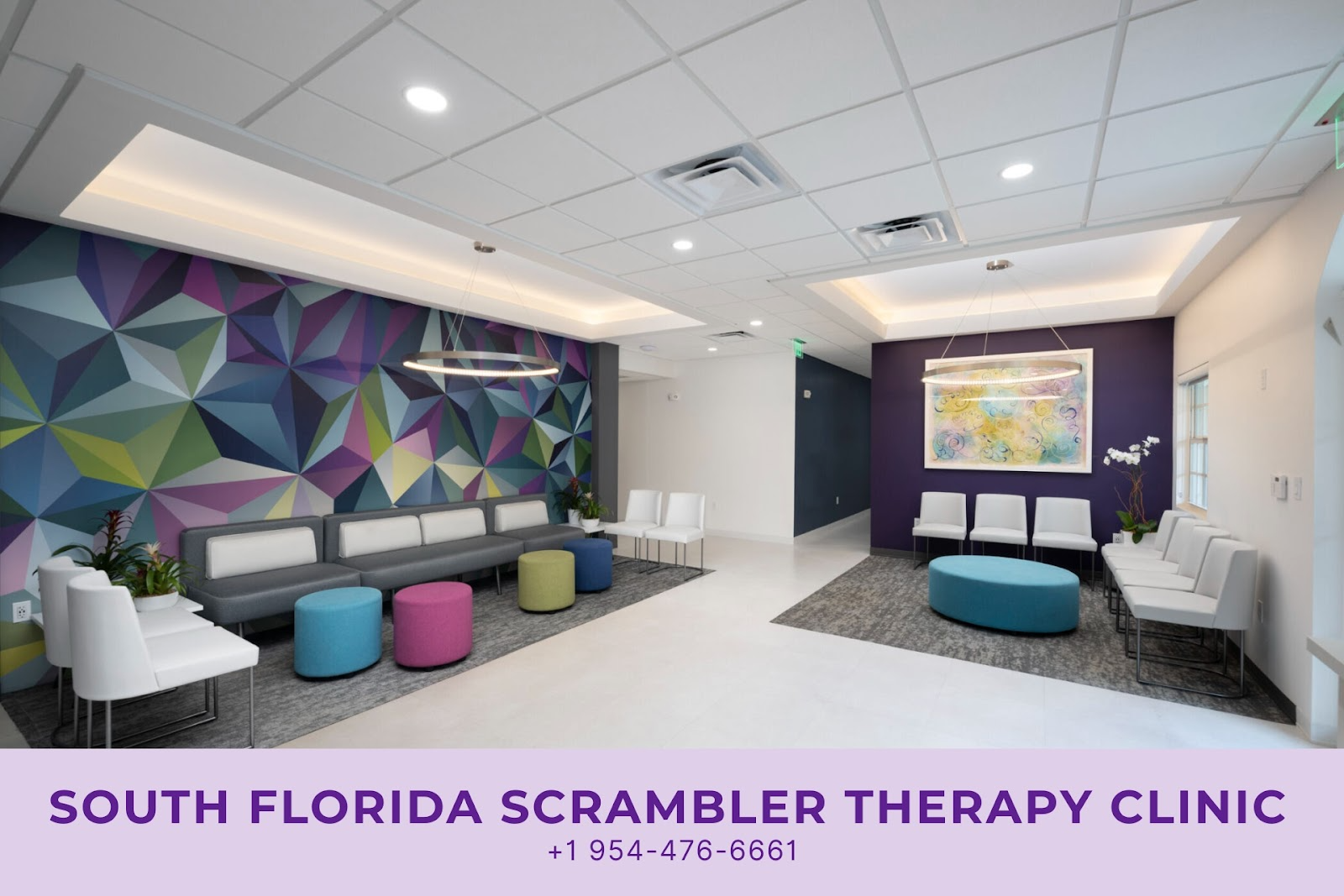
Every day counts when we suffer from chronic pain. South Florida Scrambler Therapy offers a free initial consultation to determine if Scrambler is right for you. Schedule Today:
- Speak directly with Dr. Rick Markson’s team
- Learn about treatment protocols and insurance
- Complete a customized treatment plan
- Start seeing results within days, not months
📞 Call Now or Visit website: www.southfloridascramblertherapy.com
📍 We serve Palm Beach, Fort Lauderdale, and Miami from our location at 100 NW 100th Ave, Plantation
You Can Follow Us through Our Social Media:
📸Instagram—Day-in-the-life stories from our patients
👍Facebook—Success journeys and community support
You deserve to laugh, and enjoy life without pain. The journey starts here.
Start Your Pain-Free Journey Today
